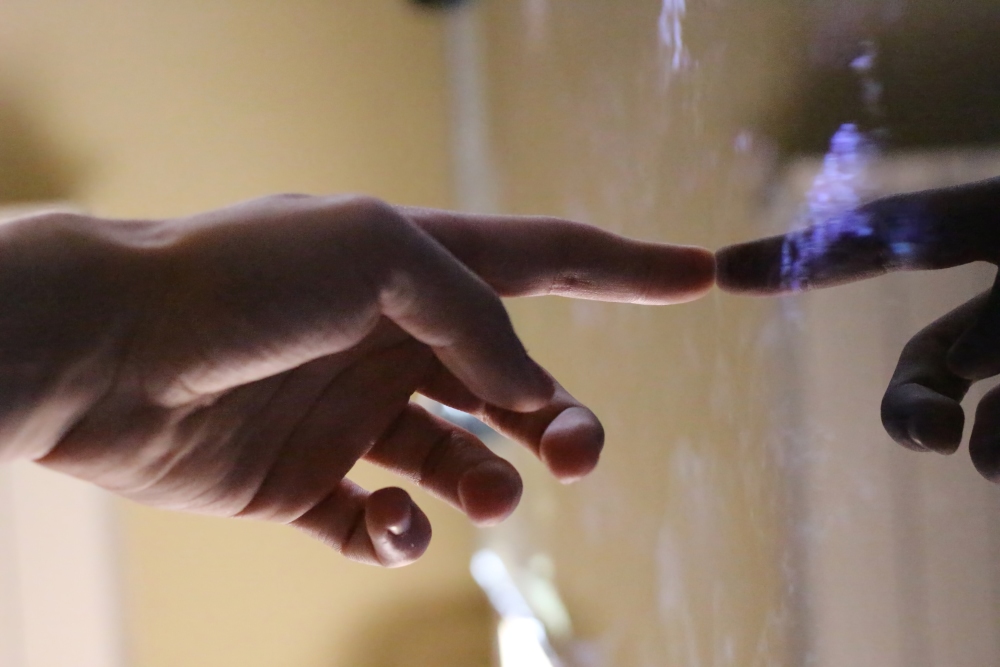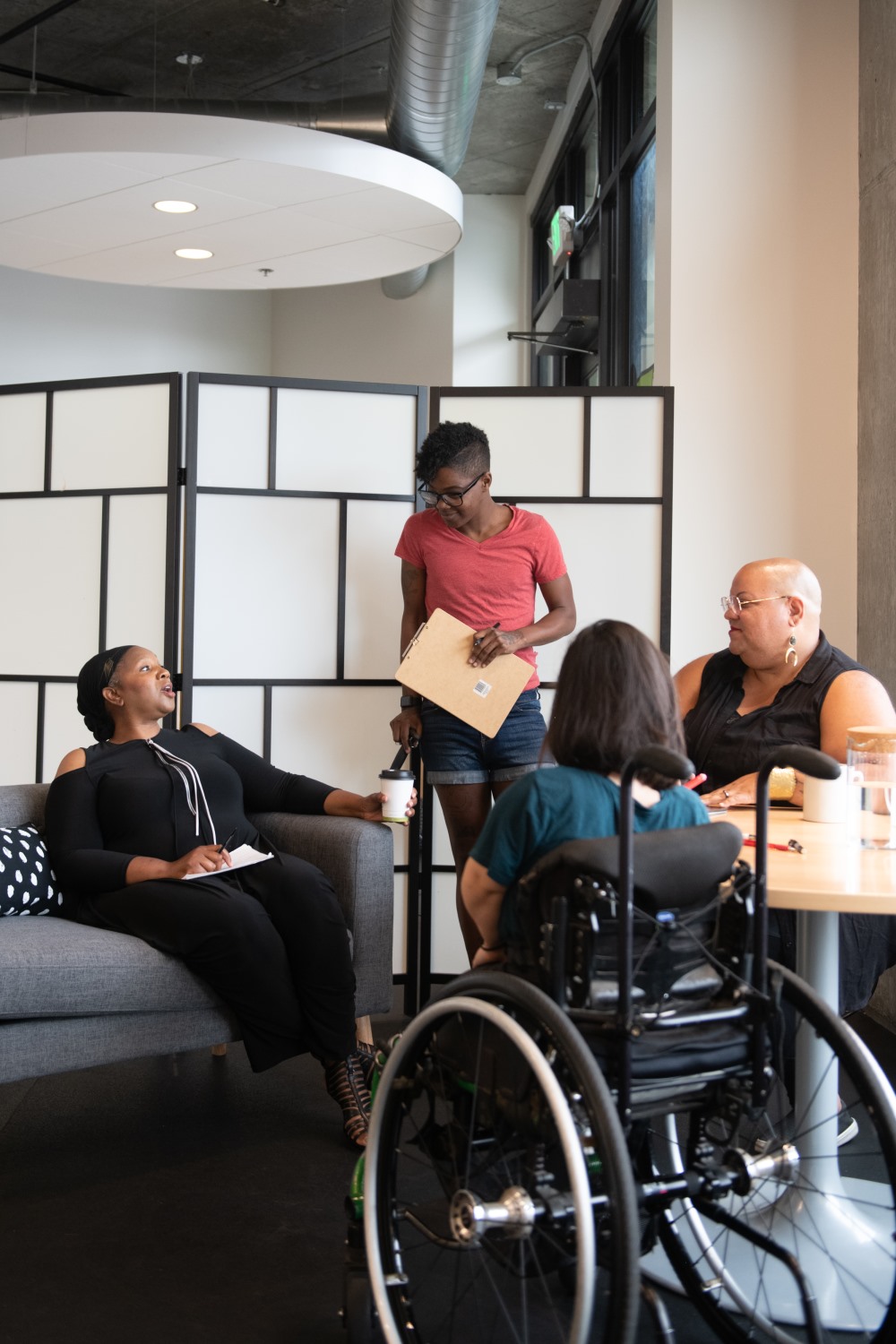
When creating an autism-friendly environment, it is important to think about the range of needs different autistic people have; although it is not possible to cater for all needs, making some adjustments could make all the difference for some.
Our guide to creating an appropriate, accessible environment for an autistic person looks at some of the challenges and triggers an autistic person might face, and ways to help circumvent or minimise them. We consider what needs to be addressed when creating your own autism-friendly environment checklist, as well as the differences in creating an autism-friendly environment at home, school, work and in public spaces.
One of the most important considerations when creating an autism-friendly environment are the key senses of sight, sound, touch, taste, smell, body awareness and balance. Autistic people can experience either over-stimulation to these senses (hypersensitivity), under-stimulation (hyposensitivity) or both.
As we have mentioned before, autistic people have their own preferences and triggers, and when creating an autism-friendly environment, individual differences should be taken into account wherever possible.
Under-sensitive autistic people may perceive objects to be darker or even lose some of their features. Often their central vision can blur while their peripheral can be hyper-focused and sharp, and light can appear to jump around.
Over-sensitive autistic people can be highly sensitive to lights, in particular fluorescent lights. Their perception of colours and patterns can also be heightened, causing overstimulation or even discomfort. They may also experience distorted vision where images appear to fragment. It can be easier for them to focus on small areas of detail rather than the whole object.
When creating an autism-friendly environment, consider the light source.
Consider choosing appropriate colours and patterns.
Under sensitivity can cause limited hearing in one or both ears or no hearing at all. In order to create some stimulation, an autistic person may enjoy noisy places or banging doors. Over-sensitivity can cause sound to be magnified, causing overstimulation and physical pain.
Think about all the ways in which sound can infiltrate a space and how you might minimise this in an autism-friendly environment.
Trying to create an environment that is as quiet as possible will allow the use of sound to be used in a controlled way for enjoyable stimulation.

Under-sensitive autistic people may enjoy holding others tightly, chewing on items and finding heavy objects soothing. A great addition to an autism-friendly environment is weighted blankets that can help provide that feeling of heaviness to reduce anxiety.
Over-sensitive autistic people experience touch completely differently. Often touch can cause high amounts of discomfort and physical pain. Clothes and fabrics also contribute to the overstimulation of touch for an autistic person.
Try including a range of different textures that can be touched, such as a fibre optic carpet, fibre optic tunnel, or our wide range of sensory soft play equipment that can be used to engage the brain and body.
Under-sensitivity to taste can influence the amount of spicy food an autistic person may prefer to eat as well as having an interest in eating non-edible objects such as stones, soil or metal. Over-sensitivity to taste often means flavours in food can be strong and overpowering. Food textures can also play a large role, often more so than taste itself.
In an autism-friendly environment, food is best kept contained to limit the odour that they produce.
Under-sensitivity to smell can reduce the amount an autistic person may be able to smell. They may fail to notice strong odours or have no sense at all. Over-sensitivity to smell can mean subtle smells appear intense and overpowering.
When adjusting an area to create an autism-friendly environment, consider what smells there may be in the room, even if they are subtle.
Trying the keep the environment as fragrance-free as possible will help to reduce the overstimulation an autistic person may feel and provide a neutral place to ensure carefully-selected aromatherapy can be enjoyed.

Also known as the vestibular system, this relates to balance and movement. Under-sensitivity to balance can be a need to swing, spin or rock in order to produce some sensory input. Over-sensitive autistic people may find controlling their body during some sports difficult and may be more prone to car sickness.
Otherwise known as proprioception, the sense of one’s body in the physical world around them, body awareness can be a challenge for autistic people.
Under-sensitive autistic people may stand too close to others if they struggle to be aware of personal space. They can have difficulty judging the space around a room and navigating to other areas.
Over-sensitivity to body awareness can create difficulty with fine motor skills and utilising small objects. Think about offering activities within an autism-friendly environment to promote the use of fine motor skills.
Creating an autism-friendly environment has countless benefits for autistic people as a way to reduce negative sensory stimuli and enrich a positive sensory experience. Adjusting a sensory environment for autism can help to reduce stress and anxiety, develop communication skills, improve focus and enhance sensory stimulation, to name just a few. What’s more, it can provide a vital space for autistic people when the world around them gets too much.

Photograph from Disabled and Here
Creating an autism-friendly environment at home, in a school, at work or out in public spaces needs careful consideration; each environment will be used differently. When thinking about where the autism-friendly environment will be, think about;
Here are some suggestions for creating a sensory environment for autism.
In a home, it is easier to tailor an autism-friendly environment to the needs of the individual.

Around 700,000 adults and children in the UK are autistic. Many face regular challenges and triggers in their daily lives but not one experience is the same. Often these triggers can make the world feel scary and difficult to understand increasing stress and anxiety. Autism-friendly environments go some way in creating a space to process the information they are stimulated with. Having some understanding of the different challenges and triggers that some autistic people may experience can help signal ways in which creating an autism-friendly environment can help.
The challenges: Autistic people often struggle to understand or ‘read’ others’ feelings or intentions, while also struggling to express their own emotions. An autistic person’s social interaction may come across as insensitive or sometimes even socially inappropriate. They might need time alone when they have been overstimulated by people, which can be interpreted as being cold or aloof.
How to help: In these situations, talking about the social interaction before it takes place can help in some way to ease the anxiety around the social interactions. Knowing where to escape when it gets too much can also ease any worries about being overstimulated.
The challenges: Some autistic people might be completely non-verbal, some might go non-verbal for periods of time (i.e., when overwhelmed or having a meltdown) but have good language skills, others might be verbal but struggle with language skills or development. Difficulties in understanding sarcasm, metaphors, idioms or tone of voice can arise as communication is often taken more literally.
How to help: Allowing an autistic person more time to process and interpret the information they have been given, whether that is dialogue, gestures, tone of voice or sarcasm, is one way that can help aid communication.
Additionally, having clear visual communication can help non-verbal autistic people to make themselves understood. This might be a text-to-speech app, written flashcards or using BSL instead of spoken language.
The challenges: Being overstimulated with too much information can cause stress and anxiety for autistic people. This can lead to withdrawal or a meltdown.
How to help: Making information more bitesize can help an autistic person process the information. Creating visual aids such as calendars or diaries help reduce the mental load of information and makes it more manageable.
Additionally, try not to only offer verbal instructions or reminders – for example, information shared over a phone call might not process, so following up your call with an email summarising what you discussed can help make things clearer.
The challenges: Often autistic people can struggle with overcrowded areas or tight spaces such as narrow hallways or busy shops.
How to help: Identifying or creating an easy and accessible escape route can ease anxiety about limited space and provide an autistic person with a safe area to retreat to if they are struggling.
It is important to keep in mind an individual’s differing needs when creating an autism-friendly environment. It is not always possible to provide a dedicated sensory room, which is why adjusting an existing space can go some way in helping an autistic person circumvent the daily challenges and provide a safe space for a positive experience.
Take a look at our wide collection of sensory products, including fibre optics and bubble tubes, or shop by needs to support individuals.